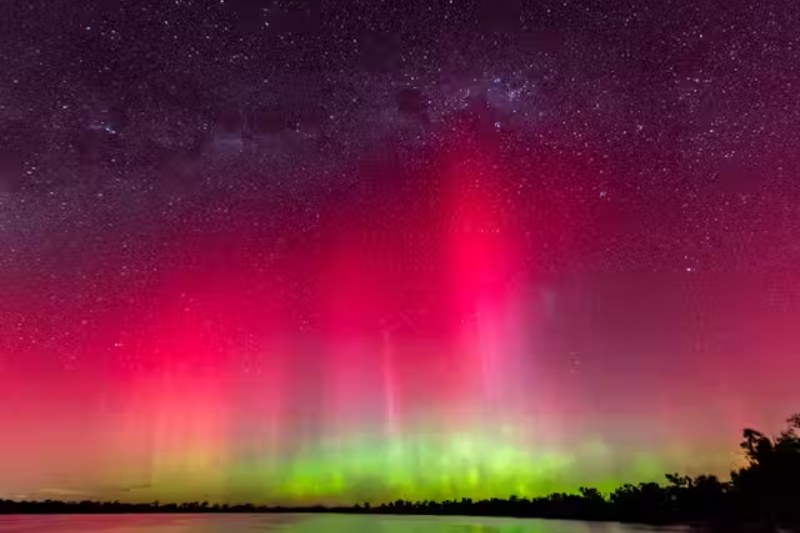There may be further solar storms and a chance for another aurora borealis show as a result of the return of the sunspots that illuminated parts of the United States with the magnificent Northern Lights earlier in May.
A geomagnetic storm watch is in effect until the weekend according to NOAA’s Space Weather Prediction Center. The greatest storm on the scale, the G5, which was responsible for the powerful Northern Lights on May 10, is too far away to predict, according to experts. At that time, powerful solar flares and plasma eruptions weighing billions of tons caused powerful solar storms that caused auroras to appear in unexpected locations.
NOAA issued a G1-level watch on Friday morning, May 31, indicating that the northernmost regions of the United States, such as Maine and Michigan, may be able to see the aurora. According to NOAA, there may be slight interference with power systems and satellites.
Over the next twelve days, the two sunspots responsible for the first G5-level storm since 2005 are expected to be closer to the sun’s center, according to sources. There could be another powerful geomagnetic storm on Earth if they cause a coronal mass ejection.
As the sun enters its 11-year solar maximum phase, space weather is expected to be quite active well into the following year.
“We’re just kind of getting near solar Max, and we’re not even there yet, necessarily. So yeah, this cycle is going to prove to be interesting,” “The NOAA Space Weather Prediction Center’s service coordinator, Shawn Dahl, informed. “We could certainly see the potential for more G4-level storms. I can’t say G5, though, because it’s so rare, right? We don’t have any new measure of confidence of saying that we may have another G5 to come. But it’s certainly not outside the realm of possibility.”
You can follow the Space Weather Prediction Center for updates if you’re hoping to see the Northern Lights once more.
Solar flares and coronal mass ejections, which are plasma eruptions, are caused by the sun’s powerful magnetic energy. They can produce beautiful auroras when directed toward Earth, but they can also interfere with communications and power.
In the early 1600s, Galileo was one of the first astronomers to point a telescope upward to observe sunspots. Sunspots, which are large, dark patches close to the strongest areas of the sun’s fluctuating magnetic field, are frequently the sites of solar flares and coronal mass ejections.
A solar cycle is a pattern in which the magnetic field of the sun rotates every eleven years. Over the course of the following year, when the sun enters the solar maximum portion of its 11-year cycle, geomagnetic storms may become more common.















